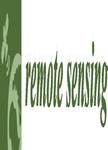版权所有:内蒙古大学图书馆 技术提供:维普资讯• 智图
内蒙古自治区呼和浩特市赛罕区大学西街235号 邮编: 010021

作者机构:Univ Gdansk Inst Oceanog Al Marszalka Pilsudskiego 46 PL-81378 Gdynia Poland NORBIT Poland Sp Zoo Al Niepodleglosci 813-815-24 PL-81810 Sopot Poland
出 版 物:《REMOTE SENSING》 (Remote Sens.)
年 卷 期:2018年第10卷第12期
页 面:1983-1983页
核心收录:
学科分类:0830[工学-环境科学与工程(可授工学、理学、农学学位)] 1002[医学-临床医学] 070801[理学-固体地球物理学] 07[理学] 08[工学] 0708[理学-地球物理学] 0816[工学-测绘科学与技术]
基 金:National Centre for Research and Development [BONUS-BB/ECOMAP/07/2017] EU BONUS-185 ECOMAP project (Baltic Sea environmental assessments by opto-acoustic remote sensing, mapping, and monitoring)
主 题:habitat mapping multibeam echosounder multi-frequency image processing feature selection object-based image analysis
摘 要:Recently, the rapid development of the seabed mapping industry has allowed researchers to collect hydroacoustic data in shallow, nearshore environments. Progress in marine habitat mapping has also helped to distinguish the seafloor areas of varied acoustic properties. As a result of these new developments, we have collected a multi-frequency, multibeam echosounder dataset from the valuable nearshore environment of the southern Baltic Sea using two frequencies: 150 kHz and 400 kHz. Despite its small size, the Rowy area is characterized by diverse habitat conditions and the presence of red algae, unique on the Polish coast of the Baltic Sea. This study focused on the utilization of multibeam bathymetry and multi-frequency backscatter data to create reliable maps of the seafloor. Our approach consisted of the extraction of 70 secondary features of bathymetric and backscatter data, including statistic and textural attributes of different scales. Based on ground-truth samples, we have identified six habitat classes and selected the most relevant features of the bathymetric and backscatter data. Additionally, five types of image processing pixel-based and object-based classifiers were tested. We also evaluated the performance of algorithms using an accuracy assessment based on the validation subset of the ground-truth samples. Our best results reached 93% overall accuracy and a kappa coefficient of 0.90, confirming that nearshore seabed habitats can be accurately distinguished based on multi-frequency, multibeam echosounder measurements. Our predictive habitat mapping of shallow euphotic zones creates a new scientific perspective and provides relevant data for the management of natural resources. Object-based approaches previously used in various environments and areas suggest that methodology presented in this study may be scalable.